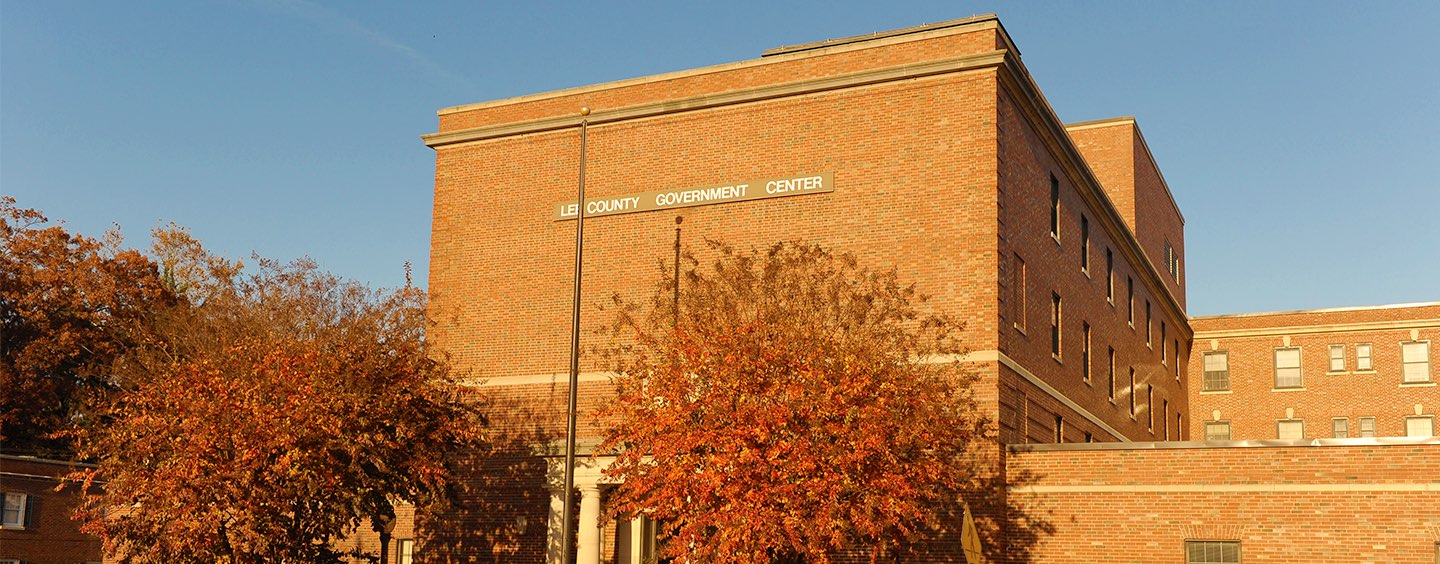By Richard Sullins | richard@rantnc.com
The decision last August to award a five-year contract to FirstHealth of the Carolinas for emergency medical services in Lee County was controversial. Hundreds attended two public hearings that month as county commissioners had to decide between staying with Central Carolina Hospital, who had operated the franchise since the 1990s, or going with FirstHealth, who had been managing similar services in Chatham, Montgomery, and Richmond counties.
Even amongst the commissioners, there were differences in opinion about whether to keep the service locally or go with a larger provider. When the final vote was taken on August 18, Democratic commissioners Mark Lovick, Robert Reives, and Cameron Sharpe joined Republicans Arianna Lavallee and Dr. Andre Knecht in voting in favor of awarding the franchise to FirstHealth. Opposing the measure were Republicans Kirk Smith, the board’s chairman, and Bill Carver.
When the contract between the county and FirstHealth was negotiated a month later, several performance measures were written into the language so commissioners could use those metrics to determine how well FirstHealth was meeting the needs of the county. At a meeting in January when commissioners were adjusting the county’s strategic plan for the next fiscal year, those performance measures were reviewed, and the results are presented here.
Call volume higher than expected
When FirstHealth submitted its proposal for EMS services for the county in May of last year, it predicted that it would respond to an estimated 6,190 calls during its first year of service. From October 1 through December 31 of 2021, FirstHealth ambulances were dispatched to respond to 2,227 calls, making Lee the busiest county within the FirstHealth system. Annualizing those quarterly total results in a projected annual number of 8,908 calls through September 30 of this year. That’s 44 percent more than FirstHealth had anticipated serving.
Many of those calls were related to COVID but an even bigger factor was also at play. The emergency room remains a source of primary health care among the working poor, for those on Medicaid and welfare programs, and increasingly among the elderly. For many of these people, a visit to the emergency room by way of an ambulance is their access to primary care.
Tim Simmons, FirstHealth EMS Director for Lee County, believes that 70 to 80 percent of those 2,227 calls were not actual emergencies that required transport by an ambulance but could have instead been carried out by patients making use of privately-operated vehicles. Studies done nationwide over the past 25 years support the conclusion that inappropriate ambulance use ranges from 12 percent to 52 percent, significantly lower than Lee County.
The greatest numbers of calls by the time of day occurred at noon and then again between 2 and 6 p.m. The hours between 2 and 5 a.m. saw the fewest number of calls for ambulance assistance. Simmons said Monday through Friday continue to be the busiest days for the EMS crews, but the volumes of calls received on the weekends are only somewhat lower.
During the public hearings in August, several people expressed concerns that the majority of calls in Lee County would result in transports to FirstHealth’s hospital facility in Pinehurst, but that was not the case during the first quarter of performance. Only 15 percent of all calls made within the county resulted in transport outside of it.
The greatest number of these (63) were for reasons of medical necessity, with another 16 made by helicopter, and 13 others were made because a facility outside the county was closer to the scene of the emergency. 49 patients were transported outside the county at the request of either the patient or their family and 8 others were done at a physician’s request.
Staffing and response times
The contract signed in September requires FirstHealth to station a minimum of four ambulances and Advanced Life Support crews to increase response times. Two crews are to be located at FirstHealth’s base on Central Drive in Sanford, with one other each sited at volunteer fire stations in Northview and Carolina Trace.
In their review with the commissioners in January, FirstHealth reported having only three trucks available and staffed 24 hours a day. Simmons said that two new Advanced Life Support ambulances have been purchased and will be deployed soon at an additional cost to the contract of $125,000 each per year, if the county requests them. The contract calls for four ambulances, but FirstHealth only has three in operation. And to get to the level the contract calls for, the county will have to shell out more money.
Sharpe asked whether the four trucks specified in the contract is enough to meet the county’s needs. Simmons believes a fifth truck will be necessary in the downtown area when the Northview fire station opens “because most of our calls are coming from downtown.”
Staffing has been another concern. Simmons said that the Central Carolina Hospital EMS unit was less staffed than anticipated at start-up and that when FirstHealth assumed the contract on October 1, it had only 10 full-time equivalent positions in a staff having openings for 36. By January 12, the number of openings had been reduced to 17 – slightly over half of the number that were available to be filled, with only five more applicants in the pipeline.
Simmons said another means of addressing the shortage is through the 24 current FirstHealth employees with EMT certifications that are enrolled in its EMS Academy, providing a year of free training in a hybrid format through a local community college in exchange for one year of employment as a paramedic.
Still, this circumstance was an immediate concern for the commissioners.
“Even if we had a fifth ambulance, could we staff it?” asked Carver.
Simmons expressed optimism despite the numbers, saying “I’m going out on a limb to say that we will have all our staffing issues taken care of within 90 days.”
For those in need of help during an emergency, seconds can seem like minutes and minutes can seem like hours.
FirstHealth’s response time goal for the first year of the contract is to have a crew on the scene of each call received within an average of eight minutes and 59 seconds. Simmons told commissioners the actual response time during the contract’s first quarter averaged eight minutes and 21 seconds. By comparison, response times during Central Carolina Hospital’s administration of the contract varied between seven and 13 minutes, depending on the location of the emergency.
The average turnover time – from arrival of the EMS unit on the scene until the case is turned over to staff in the emergency room – during the first quarter was 26 minutes and 13 seconds. Those handoffs don’t always happen so quickly, though. Congestion in the ER can result in longer turnover times, which in turn reduces the availability of ambulances and increases response times to other emergencies. In five cases, two hours or more were required to hand off the patient from an EMS unit to the emergency department.
Having vehicles available when needs arise is critical in a county with 63,000 residents and Sharpe asked Simmons about a recent situation where all available trucks were in use and an emergency arose that had to wait for approximately 42 minutes before help arrived. Simmons said that a confluence of circumstances had occurred with trucks out on other calls and maintenance issues on another that made it inoperable. The outcome of the incident turned out well, but it was a situation that Simmons said the department is taking steps to avoid a recurrence of in the future.
Training program for fire departments
A final performance measure that Simmons and Barry Britt, FirstHealth regional EMS director, addressed related to FirstHealth’s plan to offer tiered training at county fire departments, offering members the opportunity study emergency medical response from basic first aid through more advanced levels. Britt said meetings have been held with each fire department to offer them whatever level and amount of training they desire.
Britt said that since fire departments are generally located more closely to the scene where emergency situations develop, they can be on the scene quicker and could often deliver the types of assistance that could be life saving in many instances.
In addition to basic first aid, the initial level of training will include trauma first responder training, stop the bleeding and use of tourniquets, and “pit crew CPR,” where responders initiate chest compressions as soon as they identify a patient in cardiac arrest. A second tier of training will center on airway insertion (for EMTs only) and a third level will include intramuscular epinephrine (also for EMTs only) and Narcan administration.
Establishing and advancing the First Responder program will be prime among FirstHealth’s EMS goals in Lee County in 2022, followed by an assessment of ambulance placements through call locations, an assessment of the requirements for additional ambulances and QRVs or “Quick Response Vehicles” that can be dispatched quickly to certain types of emergencies and operated by a single EMS employee, and the continuation of hiring additional staff.
The next quarterly report from FirstHealth EMS to the commissioners is due in April.





















